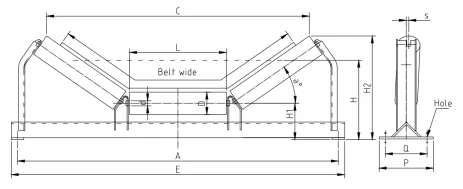 Afrikaans
Afrikaans  Albanian
Albanian  Amharic
Amharic  Arabic
Arabic  Armenian
Armenian  Azerbaijani
Azerbaijani  Basque
Basque  Belarusian
Belarusian  Bengali
Bengali  Bosnian
Bosnian  Bulgarian
Bulgarian  Catalan
Catalan  Cebuano
Cebuano  Corsican
Corsican  Croatian
Croatian  Czech
Czech  Danish
Danish  Dutch
Dutch  English
English  Esperanto
Esperanto  Estonian
Estonian  Finnish
Finnish  French
French  Frisian
Frisian  Galician
Galician  Georgian
Georgian  German
German  Greek
Greek  Gujarati
Gujarati  Haitian Creole
Haitian Creole  hausa
hausa  hawaiian
hawaiian  Hebrew
Hebrew  Hindi
Hindi  Miao
Miao  Hungarian
Hungarian  Icelandic
Icelandic  igbo
igbo  Indonesian
Indonesian  irish
irish  Italian
Italian  Japanese
Japanese  Javanese
Javanese  Kannada
Kannada  kazakh
kazakh  Khmer
Khmer  Rwandese
Rwandese  Korean
Korean  Kurdish
Kurdish  Kyrgyz
Kyrgyz  Lao
Lao  Latin
Latin  Latvian
Latvian  Lithuanian
Lithuanian  Luxembourgish
Luxembourgish  Macedonian
Macedonian  Malgashi
Malgashi  Malay
Malay  Malayalam
Malayalam  Maltese
Maltese  Maori
Maori  Marathi
Marathi  Mongolian
Mongolian  Myanmar
Myanmar  Nepali
Nepali  Norwegian
Norwegian  Norwegian
Norwegian  Occitan
Occitan  Pashto
Pashto  Persian
Persian  Polish
Polish  Portuguese
Portuguese  Punjabi
Punjabi  Romanian
Romanian  Russian
Russian  Samoan
Samoan  Scottish Gaelic
Scottish Gaelic  Serbian
Serbian  Sesotho
Sesotho  Shona
Shona  Sindhi
Sindhi  Sinhala
Sinhala  Slovak
Slovak  Slovenian
Slovenian  Somali
Somali  Spanish
Spanish  Sundanese
Sundanese  Swahili
Swahili  Swedish
Swedish  Tagalog
Tagalog  Tajik
Tajik  Tamil
Tamil  Tatar
Tatar  Telugu
Telugu  Thai
Thai  Turkish
Turkish  Turkmen
Turkmen  Ukrainian
Ukrainian  Urdu
Urdu  Uighur
Uighur  Uzbek
Uzbek  Vietnamese
Vietnamese  Welsh
Welsh  Bantu
Bantu  Yiddish
Yiddish  Yoruba
Yoruba  Zulu
Zulu Guidelines for Selecting and Evaluating Conveyor Pulley Specifications for Optimal Performance and Durability
Conveyor Pulley Specification A Comprehensive Overview
Conveyor systems are integral components in various industries, facilitating the movement of goods and materials efficiently. At the heart of these systems lies the conveyor pulley, a crucial element that supports the belt and enhances its operational performance. Understanding the specifications of conveyor pulleys is essential for selecting the right components for specific applications.
Types of Conveyor Pulleys
Conveyor pulleys are categorized based on their function and application. The most common types include
1. Drive Pulleys These are powered pulleys responsible for moving the conveyor belt. They connect to a motor and are often located at the discharge end of the conveyor.
2. Idler Pulleys These pulleys support the belt and are not powered. They help maintain tension and alignment while also reducing sagging in the conveyor system.
3. Tail Pulleys Positioned at the loading end, tail pulleys aid in the return journey of the conveyor belt.
Each type serves a distinct purpose, and its selection depends on the operational requirements of the conveyor system.
Key Specifications
When assessing conveyor pulleys, several specifications must be considered
1. Diameter The diameter of a pulley influences the belt tension and the overall performance of the conveyor. Larger pulleys are typically used in applications requiring higher belt speeds.
conveyor pulley specification

3. Material Conveyor pulleys are often constructed from steel, aluminum, or plastic, depending on the application. Steel is preferred for heavy-duty applications due to its strength and durability.
4. Bushing and Shaft Size These dimensions are critical as they determine the pulley’s compatibility with existing equipment. Standard sizes should be adhered to for ease of maintenance and replacement.
5. Face and Edge Profile The face of the pulley should be designed to minimize belt wear, while the edge profile can influence grip and performance under varying load conditions.
6. Coating and Surface Treatment Depending on the application environment, pulleys may require specific coatings to resist corrosion, UV exposure, or other chemical reactions.
Performance Considerations
In addition to the physical specifications, the performance of conveyor pulleys is influenced by factors such as load capacity, speed ratings, and operational environment. Assessing the load characteristics is crucial during the design phase to prevent excessive wear or failure. Moreover, the speed at which the conveyor operates can dictate the choice of pulley material and design.
Installation and Maintenance
Proper installation and maintenance of conveyor pulleys are vital for ensuring longevity and efficiency. Regular inspections are necessary to identify signs of wear, misalignment, or other operational issues. Maintenance practices such as lubrication, cleaning, and alignment checks will prolong the life of the pulleys and the conveyor system as a whole.
Conclusion
The specification of conveyor pulleys is a critical element in the design and operation of conveyor systems. By understanding the various types, dimensions, materials, and performance characteristics, engineers can make informed decisions that enhance the efficiency and reliability of material handling processes. Selecting the right conveyor pulley not only optimizes productivity but also contributes to the overall sustainability of the operation, proving that attention to detail in specifications can yield resounding benefits in the long run.
-
Revolutionizing Conveyor Reliability with Advanced Rubber Lagging PulleysNewsJul.22,2025
-
Powering Precision and Durability with Expert Manufacturers of Conveyor ComponentsNewsJul.22,2025
-
Optimizing Conveyor Systems with Advanced Conveyor AccessoriesNewsJul.22,2025
-
Maximize Conveyor Efficiency with Quality Conveyor Idler PulleysNewsJul.22,2025
-
Future-Proof Your Conveyor System with High-Performance Polyurethane RollerNewsJul.22,2025
-
Driving Efficiency Forward with Quality Idlers and RollersNewsJul.22,2025





























